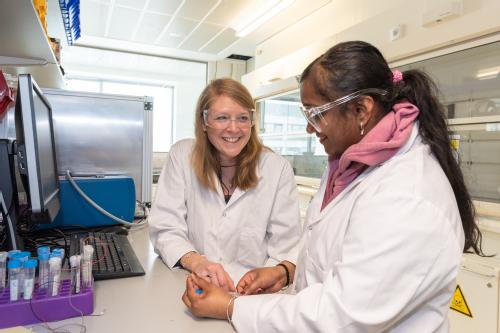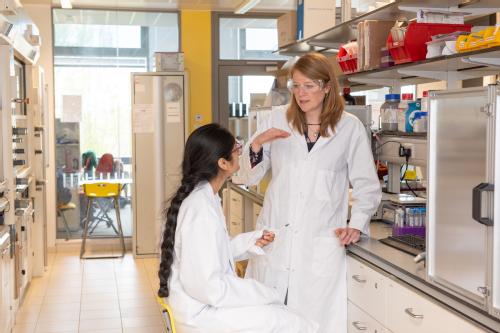Photosynthesising Astronauts' Oxygen Supply


The way ahead for supplying astronauts with oxygen is through photosynthesis

Dr Katharina Brinkert, Department of Chemistry, Warwick

You might remember photosynthesis from your school science lessons. It’s a process that’s billions of years old, and essentially the reason we’re alive. Yet most adults forget about it or take it for granted.
I’ve always been fascinated by photosynthesis. And now, I’m fulfilling a lifelong dream by researching it for a living.
Imagine you’re on board the International Space Station, looking out over Earth, the stars and the vastness of the cosmos.
As you ponder the meaning of it all, you reach for a bottle of beer, pop the cap and lift it to your lips.
Sound good? Well, it would actually be awful.
In fact, drinking any fizzy drink up there would be an incredibly uncomfortable experience.
That’s because of the buoyancy problem in microgravity, where bubbles don’t rush to the top of the liquid and escape like they do on earth – but instead stay where they are.
The same issue has posed all kinds of headaches throughout the whole history of space exploration, not least the challenge of supplying oxygen to astronauts and cosmonauts efficiently and cost-effectively. 
Together with Dr Álvaro Romero-Calvo from the Georgia Institute of Technology, Ömer Akay from the Free University of Berlin and Dr. Hanspeter Schaub from the University of Colorado Boulder, I recently completed a study that explored a new potential answer to that difficult question. We engineered a procedure to detach gas bubbles from electrode surfaces in the microgravity environment that can be generated for 9.2 seconds at the Bremen Drop Tower in Germany.
For the first time, we showed that magnets can be used to ‘attract’ and ‘repel’ gas bubbles by immersing them in different types of an aqueous solution – a technique with the potential to make long-term space travel like trips to Mars a far more achievable goal.
Of course, not everything I do in my day-to-day work is about magnets and space. I work on artificial photosynthesis for solar-to-chemical energy conversion, and that’s exactly what I’ve wanted to do since I was 15 years old. A very inspiring teacher supported me in lots of chemistry competitions; at the age of 16, I was working on an idea how to generate solar power from eggshells in a federal contest in my native Germany. I’m fascinated by photosynthesis, and in particular how we can mimic it.
In nature, energy from sunlight drives the synthesis of energy-carrying molecules that the plant uses to produce glucose and, as a byproduct, oxygen. So as scientists, our aim is to use artificial photosynthesis to both produce types of energy that we can use and generate oxygen in situations where that would otherwise be difficult. 
In the Brinkert Group here at Warwick, we always try to treat each other with respect, work together and tackle problems as a team because we all want to make the world a better place. Of course, that’s not always easy. Something aspiring young scientists might not realise is that you have to be prepared for a lot of moving around and travelling in your career. But it’s also fun as you get to meet and work with many interesting and inspiring people around the world and you get to form friendships everywhere.
My colleagues at Warwick are very motivated, engaged and passionate about what they do. We also get lots of freedom as young scientists to develop our own ideas and groups. I’m sure all that freedom and collaboration will lead to some great discoveries. And hopefully the work of me and my colleagues can play a role in improving how we supply oxygen to astronauts up in space.
chemistry
